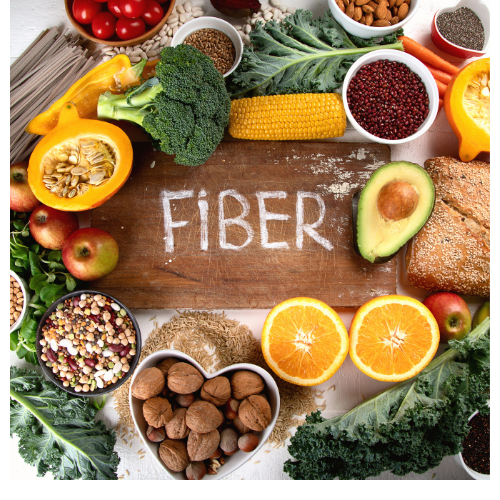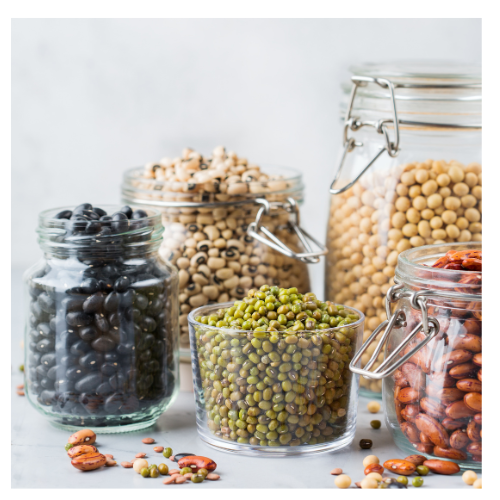
When we think of nutrients that can transform our health, we often think of protein, omega-3s, or antioxidants. But one of the most powerful tools for improving heart health, metabolic wellness, and longevity isn’t flashy or trendy—it’s fiber.
Despite its quiet reputation, fiber is a nutritional powerhouse that can help reduce the risk of cardiovascular disease, improve blood sugar control, support a healthy gut microbiome, and even increase our healthspan—the number of years we live free from chronic illness.
Let’s take a closer look at why fiber deserves a front-row seat on your plate—and how simple changes can make a big impact.
1. Fiber & Cardiovascular Health: A Stronger Heart
Heart disease remains the leading cause of death worldwide, but research shows that a higher fiber intake is strongly associated with a lower risk of cardiovascular disease. Soluble fiber—found in oats, beans, apples, and flaxseeds—helps lower LDL cholesterol (the kind that’s linked to heart disease at high levels).
Fiber’s benefits go beyond cholesterol- it also helps regulate blood pressure, reduce inflammation, and support healthy blood vessel function. These benefits add up: people with high fiber diets have a 15–30% lower risk of developing cardiovascular disease.
Try this: Start your day with a bowl of oatmeal topped with berries and chia seeds, and stir in a scoop of protein powder to make it a doubly whammy breakfast (high protein and high fiber), or swap white bread for whole grain.
2. Fiber & Metabolic Health: A Natural Blood Sugar Balancer
Fiber plays a key role in stabilizing blood sugar, which is critical for preventing and managing conditions like insulin resistance and type 2 diabetes. Soluble fiber slows the absorption of sugar in the bloodstream, preventing blood sugar spikes and crashes.
Even more exciting? Fiber feeds the beneficial bacteria in your gut, which produce short-chain fatty acids that improve insulin sensitivity and reduce systemic inflammation—two important factors in metabolic health.
Try this: Add lentils to your soup, chickpeas to your salad, or roast a tray of fiber-rich vegetables like Brussels sprouts and sweet potatoes.
3. Fiber & Healthspan: More Years, Better Quality
Eating for longevity isn’t just about living longer—it’s about living better. Fiber is a key player in increasing healthspan, the number of years we feel healthy and vibrant and live free of chronic disease. A high-fiber diet is linked to lower rates of chronic disease, better digestive health, and even improved cognitive function.
In large population studies, people who eat more fiber tend to have a lower risk of dying from all causes—especially cardiovascular and metabolic-related conditions.
Try this: Make it a goal to include fiber at every meal. Think whole fruits instead of juice, brown rice over white, and adding beans or vegetables to pastas and casseroles.

Types of Fiber: Soluble vs. Insoluble
Not all fiber works the same way in your body—there are two main types, and both play unique roles in your health. Soluble fiber dissolves in water to form a gel-like substance, helping to lower cholesterol, stabilize blood sugar levels, and keep you fuller longer. You’ll find it in foods like oats, beans, apples, and chia seeds. Insoluble fiber doesn’t dissolve in water; instead, it adds bulk to stool and supports regular bowel movements, which is key for digestive health. Great sources include whole grains, nuts, carrots, and the skins of fruits and vegetables. Including both types in your diet helps ensure you’re getting the full spectrum of fiber’s benefits.
How Much Fiber Do You Need?
Most adults need at least-
- Women: 25 grams per day
- Men: 38 grams per day
But the average intake is only about 15 grams. That means most of us are missing the mark—by a lot. The good news? Small changes add up quickly.

Motivated to Add More Fiber? Here’s How to Start:
- Go slow: Increase fiber gradually to avoid digestive discomfort.
- Drink more water: Fiber needs fluid to move through your system.
- Mix and match: Use a variety of fiber sources—fruits, vegetables, whole grains, legumes, nuts, and seeds.
Let Fiber Do the Heavy Lifting
Think of fiber as your behind-the-scenes health hero. It doesn’t just help you “stay regular”—it protects your heart, regulates your metabolism, and supports a longer, healthier life.
Making heart-healthy changes doesn’t have to mean overhauling your diet overnight. Just start by adding one more fiber-rich food to your day. Over time, these small choices become powerful habits—and your heart, metabolism, and future self will thank you.
